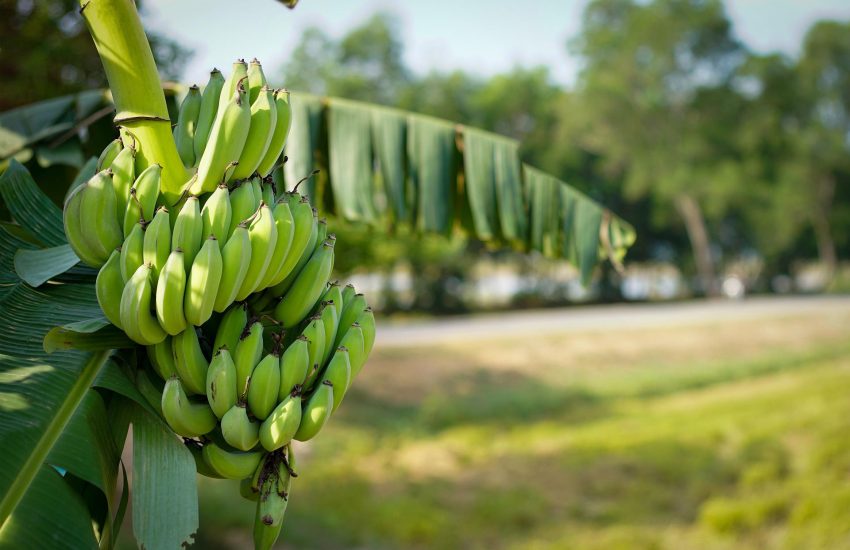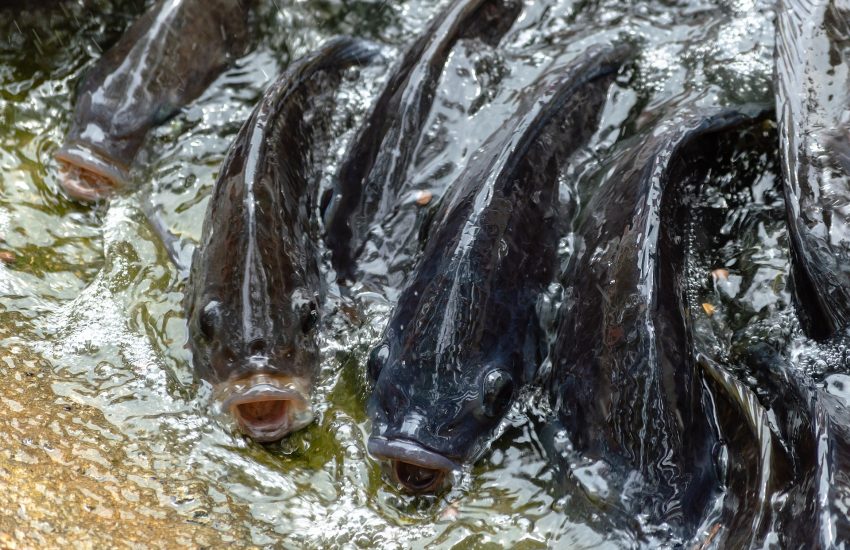John Deere 3 Series Vs. 4 Series: What Are The Differences?
The John Deere series 3 and 4 have about 17 distinct models. If you’re not sure which small tractor is suitable for you, it might be tough to choose from such a large range.
Three cylinders make up the 3 series. While the 4 series’ four-cylinder engine produces less noise and has cylinder liners made of cast-in-block material, it also emits fewer pollutants into the environment and which is obviously more costly than series 3.
I’ll go over all of the features of the two John Deere mower series in this post and provide a recommendation to help you make a better selection.
John Deere 3 Series Vs. 4 Series: Quick Comparison Table
The John Deere 3 Series and 4 Series tractors share several characteristics. Consider the contrast in the table below.
| Features | John Deere 3 Series | John Deere 4 Series |
| Power | 24.7 HP to 45.3 HP | 43.1 HP to 65.9 HP |
| Transmission control | Hydro transmission with Twin Touch™ pedals for ease of use | hydrostatic Transmission options |
| Seat Adjustability | Yes | Yes |
| Cost | $21,913.00USD to$27,625.00, plus additional charges | $31,054.00USD to $54,953.00USD, plus additional charges |
| 2WD OR 4WD | 4WD | 4WD |
| Warranty | 3 years | 4 years |
| Durability | 10 years | 10 years |
| Overall comfort | Good | Good |
| Handling Ability | Good | Good |
| Cutting Height | Adjustable cut height ranges from 2.5 cm to 10.2 cm | Adjustable cut height ranges from 2.5 cm to 10.2 cm |
About the Brand: John Deere
John Deere is a company based in the United States that makes agricultural machinery, as well as other heavy equipment and lawn care equipment. John Deere has introduced us to the series 3 and series 4 with way more modification than series 1 and 2
Everything nice happens in threes. This lineup includes the new 3D, 3E, and 3R models. This series has horsepower from 25 to 46.
The 3 Series has more muscle to accomplish jobs thanks to a greater capacity hydraulic pump, enhanced axle strength, and a bigger frame.
Tractors, farmers, cattlemen, landscapers, and stable hands are all examples of people who work in the agricultural industry. The open station options on these 4M tractors are excellent.
For work in all four seasons, the 4Rs include an optional heated and air-conditioned cab. Check out the new 4M Heavy Duty (HD) for poultry and cattle farms.
What are the Differences between John Deere 3 Series Vs 4 Series?
Now let’s learn about all the details and differences between John Deere 3 Series and 4 Series:
1. Engine Performance
Both offer John Deere 3 Series Vs 4 Series has Yanmar diesel engine. It has a large reserve of torque. Under heavy load, it may deliver enough power.
To improve fuel efficiency, the engine employs cutting-edge technology. Assist in the improvement of control and precision, as well as the reduction of environmental effects.
John Deere 3 Series:
The engine revs between 2400 and 2500 rpm. The engine is naturally aspirated in certain variants and turbocharged in others.
It is made up of three cylinders.
Cylinder liners are made of cast-in-block material. Engine power is about 24.7 HP to 45.3 HP
A water pump is used to power the cooling system. The lubrication system is pressurized, and the fuel tank holds around 28.5 liters.
John Deere 4 Series:
2600 rpm is the engine’s rev range. In several variations, the engine is normally aspirated, turbocharged, and charge air-cooled.
Four cylinders make up this structure. Cast-in-block material is used for the cylinder liners.
This four-cylinder engine emits fewer pollutants into the atmosphere. There was also a reduction in the amount of noise.
The Final Tier 4 (FT4) emission regulations of the Environmental Protection Agency (EPA) are met. Engine power is about 43.1 HP to 65.9 HP
The cooling system is supported by a water pump. The gasoline tank carries approximately 56.9 liters and the lubricating system is pressurized.
2. Reliability
Both John Deere 3 Series Vs 4 Series are reliable brands that come up with excellent facilities.
The popular hydrostatic transmission option is available on the John Deere 3 series version. Hydrostatic transmissions are simpler to use and perform well in a variety of applications.
With the Mid-PTO option, you may employ popular attachments like an AutoConnectTM deck or a 59″ front-mounted snowblower.
The capacity of the hydraulic system has been improved.
Operators may now hoist a 1500-pound round bale with tools like a hydraulic angle blade or a stump grinder installed on the back.
The 4M and 4R are the biggest of John Deere’s four-series Compact Utility Tractors.
The 4M series is a heavy-duty package ideal for modest working spaces such as barns, stalls, and poultry houses.
An enhanced lighting package, a shorter wheelbase for mobility, and other standard improvements on the 4M heavy-duty tractors.
The John Deere 4R Series small utility tractor is at the top of the company’s product line.
A better open operator station or a premium factory install cab with heat, air conditioning, and an air ride seat are both available.
3. In-Field Performance
Customers can choose from a wide range of choices in the 3 series to fit their specific requirements.
The 3 series offers it all, whether you want something basic and affordable or something with high-end features.
Tractors of the John Deere 4 Series are designed for heavy-duty work on your land.
These tractors can tackle any work you need them to with models like the 4M and top-of-the-line versions like the 4R.
4. Warranty
The warranty on a product is frequently forgotten about. When a new Mower develops a problem, it becomes critical rapidly. As a result, you must be certain that the items are covered by a satisfaction guarantee.
On John Deere 3 series mowers, a three-year guarantee is provided, which is a huge plus.
The four-year or four-thousand-hour warranty is standard on John Deere 4 series mowers. For each model, the warranty is the same.
When you compare the warranty conditions for the 3 and 4 series, you’ll notice that you receive an extra year of coverage. Because 4 series is more expensive and performs better, this is the case.
John Deere 3 series vs 4 series: Which One to Choose Finally?
Customers are pleased with the performance of both models of Yanmar engines. According to customer feedback, customers prefer the 4 series to the 3 series.
Cost remains a key concern since the 4 series is quite pricey. On the other hand, the four series’ performance is significantly outstanding.
Due to its 8-inch greater width, the 4 series is around 1000 pounds heavier. The rear castings of the 4 series are made of steel, whereas the 3 series are made of aluminium.
In comparison to the 3 series, the 4 series have planetary rear drives.
Customers claim that a large yard tractor is not the same as a little field tractor.
The 4 series is more powerful than the 3 series, but the frame size and other features are identical.
I’d recommend the 4 series over the 3 if you’re intending to do some small farming.
FAQs.
How wide is a John Deere 3 Series tractor?
2.24 to 2.26 cm on the inside 3.63–3.66 cm in diameter outside.
What job does a John Deere 3 Series work well for?
The 3 Series is consistently the best option for the job at hand. Cutting Difficult Ground. Tilling. Leveling and Grading.
Where is the John Deere 4 Series tractors made?
The biggest in the line of John Deere small tractors is the 4 Series. John Deere 4 series tractors are available for purchase at Quality Equipment in Durham, North Carolina.
Do you think John 4 series is reliable?
YES. With cutting-edge technology and your choice of Yanmar normally aspirated or turbocharged diesel engines, the John Deere 4 Series small tractors are here to make the difficult tasks appear simple.
Summary
To choose which is best for you, weigh all of the distinctions between the 3 and 4 series.
With the 3 and 4 series, you have a larger and more contemporary selection of lawnmowers, combines, and crop production equipment.
You have access to high-quality performance, convenience, and comfort features, as well as productive equipment.
Related Posts:


